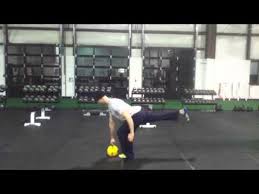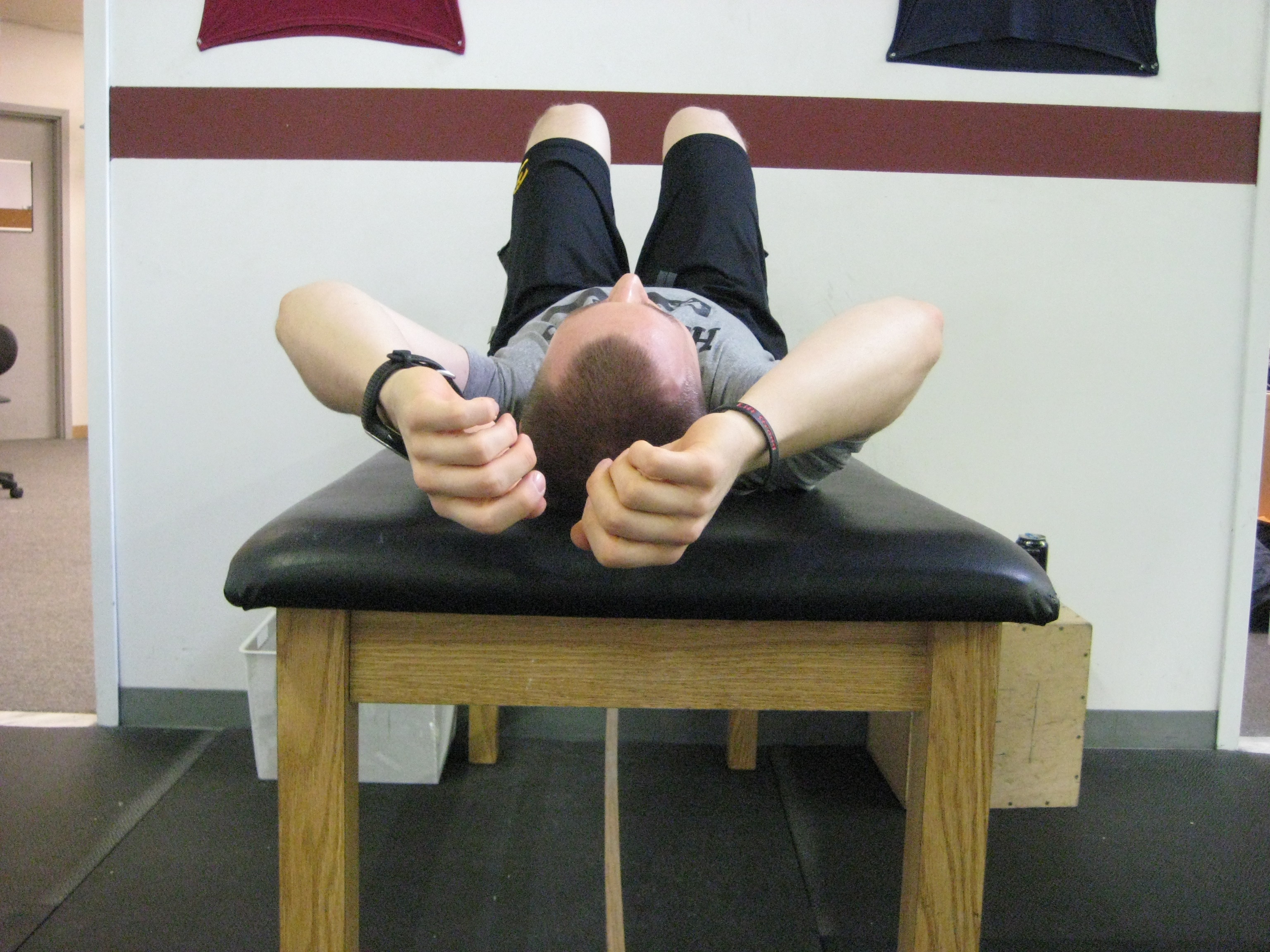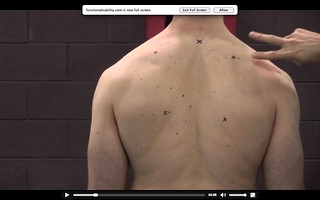A HUGE thank-you to Bret Contreras for his contribution to this post. You’re my boy blue!
A little backstory. A long time ago, in a galaxy far, far away A few years ago – back in 2010 – I wrote a blog post in response to someone claiming that deadlifts were “one of the worst things you could do for your spine.”
The comment was made by a TA (Teacher’s Assistant, not to be mistaken for Total Asshat) in a University setting, and the student who overheard the comment reached out to me and asked for some commentary.
I happily obliged.
You can read the original post HERE.
Even though I wrote that blog coming up on four years now, it’s still one that gets a lot of “love” and frequent comments.
Today I want to share the latest comment (another deadlift detractor) that was posted up two days ago by a physical therapist (and I assume a pilates enthusiast based off some of her wordplay), as well as mine, and subsequently, Bret Contreras’s, response.
I understand that some people will think to themselves, “What’s the point? If someone who’s clearly educated and is a practicing therapist feels deadlifts are the worst thing since Hilter (my words, not the therapist’s), do you really feel writing a response will change their mind?”

It’s a valid question, but my response is simple.
These types of posts are important for other fitness professionals since they’ll undoubtedly hear these types of arguments over time and they need to know how to respond.
So to begin lets take a gander at the therapist’s comments. Again, it may help to read the original post HERE.
I’ll preface this by saying that, giving credit where credit’s due, she kept things “civil” and refrained from using ad hominem attacks, which was refreshing to say the least.
In addition, she used her REAL name in the comments section (Meggen Lowry. I wasn’t going to include the name here, but since people can see it in the comments section anyways, why not?), which was a nice change of pace and sure beats hearing from the likes of PowderPuffPrincess or JackedGunz84.
In doing a quick Google search, Meggen’s a well educated professional who works with a very specific population (pre-natal/post-natal clients, as well as those in a rehabilitative setting), which is relevant and gives context into her point of view.
Anyways, lets get to the meat and potatoes!
Posted on TonyGentilcore.com 4/27/14:
1) Your attitude and arrogance makes for an unpleasant reading experience.
2) Pilates uses limb loading, and can create significant loads through your spine but tends to be done in better postures and positions that support the spine and reduce downwards strain on the pelvic floor. Try it. You might find it isn’t for wussies.
3) Osteogenesis (bone adaptation by means of increased bone laydown) in response to loading is not a phenomenon unknown to researchers and physical therapists.
4) The problem with ‘educators’ like yourself is that you use the collective terms “spine” and “back” when talking about individual components of those structures. Deadlifts do not strengthen your whole spine. They are not good for your back.
The erector spinae will be strengthened (and possibly injured) with a dead lift, nobody is denying that.
The vertebral bodies themselves will experience adaptation and increase in density also. The intervertebral discs, however, will suffer. Under such huge compressive forces the nucleus pulposis will be ‘squished’ backwards and the annular fibres of the posterior portion of the disc will tear under strain. Those discs are not replaceable….
5) Intra-abdominal pressure is far far greater with a deadlift than any other exercise you mentioned, and increases even more if the person holds their breath. Intra-abdominal pressures of that magnitude cause significant detrimental strain to the abdominal wall, predisposing it to herniation. Even worse, it causes even greater strain to the pelvic floor, stretching and weakening the pelvic floor muscles and predisposing them to urinary incontinence and prolapse.
Until you show me some research (preferably not 20-30 year old research) demonstrating intervertebral disc and pelvic floor adaptations to dead lifts, proving that the annular fibres of the discs are not broken under strain and the pelvic floor is not weakened and lowered, I’m still going to advise my clients against them.
WHEW! And there you have it.
I’ll admit it: when I first read all of that the other day my first reaction was as follows:
LOL – Just kidding. I’m not going to kill anyone.
I was a bit “miffed,” but I think that would be anyone’s reaction whenever someone questions your training philosophy and beliefs. Strength coaches defend deadlifts; yoga instructors defend downward dog; pilates instructors defend reformers; bodybuilders defend fanny-packs and benching with their feet up. It’s just how the world revolves.
Even so, I was bit taken aback by some of Meggen’s comments. Sure, she brought up some valid points (addressed below), but she also seemed, in my opinion, to have a very narrow-minded mentality – especially for someone who’s a physical therapist.
I mean, in checking the Mission Statement of the establishment where she’s employed you find the following text:
In addition to home visiting, we offer exercise classes carefully designed and delivered by physiotherapists for people whose bodies are vulnerable to pain and injury because we believe movement can be the best medicine if you perform exercise tailored to the shape you are in.
How can someone who’s company’s Mission Statement says “we believe movement is the best medicine if you perform exercise tailored to the shape your are in” completely disregard a basic, human movement pattern – the deadlift – and deem it and all its iterations “dangerous” or “risky” or gloss over them because of the potential for spinal stress?
That seems a bit harsh and shortsighted if you ask me.
Isn’t that the point of exercise – to stress the body, including the spine?
Any competent coach will assess his or her client/athlete, progress them accordingly – based off their training experience, injury history, etc – and provide the minimal essential strain to stress the body so that it will come back stronger. It’s called adaptation!
In my experience, those who disregard certain exercises or movements and/or poo-poo them altogether typically (not always) are those who’ve never performed them themselves in the first place.
Calling a spade a spade, these are also the same people who have no idea how to coach said movement(s) well. So, as a result, the exercise becomes too “risky” and everyone else who uses it is wrong.
Meanwhile if we were to take Meggen’s company’s Mission Statement and apply it to real life, we’d realize that the deadlift, like every exercise ever invented by human beings, can be regressed and tweaked to fit the abilities and needs of each individual.
Using a quick example: Look at me hinge from the hips, load my glutes, maintain tension in the upper back and lats, keep a “neutral” spine, and reduce “stress” on my spine below.

This is a deadlift, too. Not all deadlifts have to be max effort, full-exertion, grind it out movements. And while it (should) go without saying: a properly executed deadlift – done with a neutral spine – is a far cry from the eye sores you see a lot of trainees performing.
The two can’t and SHOULD NOT be lumped into the same category (which is what I feel many people, not just Meggen, are doing).
Okay, so lets break down Meggen’s comments. I’ll re-post her point-by-point breakdown below followed by my response (if I have one) and Bret’s.
1) Your attitude and arrogance makes for an unpleasant reading experience.
Tony: You know what. You’re right. I re-read the post again and I can see how someone would come to that conclusion having never read any of my stuff before. I did come across as a bit of an a-hole, and I apologize for that.
Not that it’s a hard defense, but it was FOUR years ago that I wrote that post, and I’d like to think that I’ve grown as a person (and writer) since then.
Having said that, I “get” that my writing style isn’t for everyone. Touche.
Bret: As somebody who is very well-versed with industry leaders in strength & conditioning, I can say with confidence that Tony might be the most humble of the bunch.
Tony’s Response to Bret’s Response: Awwwwwwwwwwwwwwwwwww.
2) Pilates uses limb loading, and can create significant loads through your spine but tends to be done in better postures and positions that support the spine and reduce downwards strain on the pelvic floor. Try it. You might find it isn’t for wussies.
Tony: And, Pilates should be held under the same microscope. Just like deadlifts, Pilates, too, can add undo strain or stress on the spine when done incorrectly.
Can you honestly sit there and tell me that performing hundreds of repetitions of any Pilates exercise – even if supported and done in alignment – won’t “stress” the spine?
I actually know quite a few Pilates instructors, most of which understand the importance to strength training, who recognize that it can hurt people when done incorrectly.
The key term you use is “better postures and positions,” which I assume means alignment.
YES!!! Alignment is key.
This is something I discuss quite often. It makes no sense to debate over which comes first or should be prioritized – mobility or stability – if someone isn’t in (optimal) alignment.
Note: it should be highlighted that there’s no such thing as true alignment or neutral or symmetry. It doesn’t exist, because the human body – based off our anatomy – is designed to be asymmetrical.
I 100% agree with you on this point. So, tell me again, if a deadlift is performed correctly, with a neutral spine, it places too much stress on the spine?
And, as far as your comment “Try it (Pilates). You may find it’s not for wussies.” I did!
You can read about it HERE.
Funny thing: I like to try things that I write about. In fairness, the Pilates post was written well after the post we’re all discussing here. But still, I feel like I should get a gold star or something.
Which begs the question, Meggen: what’s the parallel you’re trying to make between a modality which was originally designed to treat injured dancers and……deadlifts?
More specifically: deadlifts, when performed correctly and by healthy individuals with no contraindications? Even more specifically: deadlifts, which have been utilized by thousands of physical therapists (past and present) to help people get stronger and move more efficiently.
Also, when was the last time you performed or even coached a deadlift? When was the last time you ever prepared an athlete for a long, competitive season? When was the last time you coached ANYONE interested in performance?
I hate to break the news to you, but deadlifts are kind of important in this regard.
Context is important here. I understand – and respect – the population you work with (pre and post natal women, and those in a rehabilitative setting), and deadlifts may not be a good fit for some of YOUR clients. I doubt that’s the case entirely, but still…….you know your clients better than me.
There are ways to regress the deadlift and to teach someone how to groove a proper hip hinge pattern. It takes coaching, it takes times, and it also takes not deeming an exercise too “risky” because you’re not familiar with it.
Like I said above, not all deadlifts have to be loaded with 400 lbs on the bar. You can’t equate all deadlifts as being equal. What I’d do for someone who’s in pain, de-conditioned, has little to no training experience has chronic back issues, and moves like the Tin Man is COMPLETELY different compared to someone who’s healthy and otherwise “good to go.”
Take THIS post I wrote not too long ago on how to groove the hip hinge.
Lets try not to toss the baby out with the bathwater.
Bret: Most strength coaches borrow from Yoga and Pilates and incorporate various drills into their warm-ups and corrective exercise regimes. We’ll use anything that’s effective, as S&C is all-encompassing.
The same cannot be said of trendy modalities that pick and choose what’s included and what’s excluded and fail to tailor programming to the goals and needs of the individual.
Pilates can definitely be progressive in nature and isn’t always “wussy,” but if maximum power, strength, or conditioning is the goal, then you’re going to have to jump, sprint, lift heavy, and move around more.
3) Osteogenesis (bone adaptation by means of increased bone laydown) in response to loading is not a phenomenon unknown to researchers and physical therapists.
Tony: Cool, we’re on same page.
Bret: Agree! Perhaps you’d be interested to know that the highest bone densities ever recorded are in powerlifters (see HERE and HERE), and that high load exercise is more effective than low load exercise in increasing bone density (see HERE).
4) The problem with ‘educators’ like yourself is that you use the collective terms “spine” and “back” when talking about individual components of those structures. Deadlifts do not strengthen your whole spine. They are not good for your back.
The erector spinae will be strengthened (and possibly injured) with a dead lift, nobody is denying that.
The vertebral bodies themselves will experience adaptation and increase in density also. The intervertebral discs, however, will suffer. Under such huge compressive forces the nucleus pulposis will be ‘squished’ backwards and the annular fibres of the posterior portion of the disc will tear under strain. Those discs are not replaceable….
Tony: Again, I think you’re equating deadlifts done incorrectly (which if that is the case, I’ll agree with you 100%) with deadlifts that are progressed appropriately and with progressive overload in mind. They are not the same.
And, not for nothing, a 1994 study in the New England Journal of Medicine found that in a study of MRIs of 98 asymptomatic individuals, 82% of those MRIs came back as positive for a disc bulge, protrusion, or extrusion at one level. And, 38% actually had these issues at more than one level. You can read the free full text HERE.
I bring this up because, as this study shows, there’s a fair number of people walking around out there with disc bulges who are asymptomatic and show no signs of stress or pain.
What prevents (most) of them from reaching threshold is appropriate strength training, attention to tissue quality and movement impairments, and, yes, things like positional breathing and pelvic alignment (but that’s obvious, right?).
It’s not a death sentence, and we shouldn’t go out of our way to demonize certain exercises and to toss them aside because of personal ignorance.
As fitness and health professionals we can’t place people in these “no stress” bubbles, cower in the corner every time we ask them to do anything challenging, and expect them to get better.
As noted earlier, any competent coach will assess their client, progress them accordingly, and provide a minimal essential strain to STRESS the body so that it comes back stronger.
Using a population you (Meggen) may be more familiar with, HERE is an article I wrote about training women through their pregnancy. These were HEALTHY women, with no major injuries and dysfunctions, and both of which had been training with me for a few years.
I’m not sure if you’ll read the post (don’t worry, I won’t be offended), but hopefully you won’t cringe at the thought that both women deadlifted throughout their entire pregnancies.
Here’s Whitney at 32 weeks:
Here’s Cara at 33 weeks:
NONE of these lifts were even close to what either woman could do when not pregnant. The objective was to maintain a movement pattern and training effect, do what felt comfortable, and prepare them for something a helluva lot more strenuous…..giving birth!!
In addition, because I had been training both women for two years, progressing them accordingly, I had full confidence that they would be able to deadlift up until “game time.”
And, as it happens, both had seamless births (coming from a guy, that seems a bit wonky as I recognize that giving birth is anything but “seamless”) with no complications or ramifications afterwards.
It’s BECAUSE they strength trained (and yes, we did diaphragmatic breathing and tons of core work, too) that they were able to bounce back so quickly. I believe both were back in the gym within a week after giving birth.
Bret: Do you have any research to support your claim that deadlifting with a neutral posture leads to disc herniation?
I’m very well-versed in spine research, and I’m unaware of any such research.

I believe that with proper deadlifting, the erector spinae will be strengthened, the vertebrae will be strengthened, and the discs will be strengthened too, in concordance with Wolff’s law of bone and Davis’s law of soft tissue.
Nevertheless, the spine is very good at handling compressive loads when in neutral postures, and shear loading is limited in neutral spine deadlifting as well. If you round your spine close to full flexion when deadlifting with heavy loading, then lumbar intervertebral discs can indeed herniate and ligaments can be damaged.
However, now we’re talking about a different exercise (roundback deadlifting, not neutral deadlifting). An exercise is judged based on how it’s supposed to be performed, not how jackasses screw it up.
We could also speculate about the effects of performing Pilates maneuvers with improper form, but this wouldn’t imply that the exercises should not be performed with proper form.
5) Intra-abdominal pressure is far far greater with a deadlift than any other exercise you mentioned, and increases even more if the person holds their breath. Intra-abdominal pressures of that magnitude cause significant detrimental strain to the abdominal wall, predisposing it to herniation.
Even worse, it causes even greater strain to the pelvic floor, stretching and weakening the pelvic floor muscles and predisposing them to urinary incontinence and prolapse.
Until you show me some research (preferably not 20-30 year old research) demonstrating intervertebral disc and pelvic floor adaptations to dead lifts, proving that the annular fibres of the discs are not broken under strain and the pelvic floor is not weakened and lowered, I’m still going to advise my clients against them.
Tony: So 20-3o year old research, even if it’s applicable and still very much referenced by many other fitness professionals, isn’t relevant to the topic at hand? Why not?
Besides, good luck finding ANY research which states exercise doesn’t stress the spine. Walking stresses the spine.
Unless you tell someone to lie down their entire life, it’s impossible not to put the spine under some strain.
Research is more Bret’s wheelhouse, and I’m sure he’ll satiate your appetite for something more “up-to-date,” but it’s my hope that this conversation will help shed some light from our (mine and Bret’s) point of view. Neither of us are therapists, nor claim to be. We don’t diagnose anything and we don’t “treat” our clients and athletes. That sort of stuff is reserved for the likes of you.
We do, however, both recognize the importance of bridging the gap between the strength and conditioning world and the physical therapy world.
Going out of your way to state deadlifts aren’t beneficial because of the “perceived stress” they cause not only widens that gap, but flies in the face of pretty much every physical therapist I’ve ever dealt with.
I don’t expect this to alter your mindset, and I am in no way stating that I’m completely correct and without my own biases, but I hope it challenges you to think a little more outside the box.
Bret: If you’re going to deadlift, you better hold your breath until you pass the sticking region.
Failing to do so would reduce IAP and therefore reduce spinal stability, which could compromise spinal posture and lead to injury.
I agree that IAP will be extremely high during deadlifting. However, strength coaches first introduce deadlifting to clients with light loads, ensuring proper mechanics.
Each week, loads are increased so that the body has the ability to build up in strength. This is the essence of progressive resistance training. We also program multiple exercises that will further strengthen the abdominals, the erectors, and the glutes, which will further help prevent injury.
I’m aware of no research showing that deadlifts lead to increased incidents of hernias.
You can speculate that deadlifters might be at greater risk for experiencing hernias, but the role of exercise and occupational lifting on hernia risk has been debated, with both sides providing great arguments (see HERE for references). In my experience as a personal trainer for well over 15 years, I would say that proper deadlifting does not significantly increase hernia injury risk.
When you deadlift, the muscles of the TVA, multifidus, diaphragm, and pelvic floor (sometimes referred to as “inner core unit” muscles) contract to produce IAP. Essentially, a pressurized cylinder is formulated via contraction of each of these muscles (a few more assist, but this is beyond the scope of this article).
The pelvic floor muscles draw upward and inward, which increases the IAP and stabilization. As you can see, the pelvic floor muscles will be strengthened and not stretched out.
Women tend to notice improvements in incontinence after learning proper resistance training, including deadlifts.
If their pelvic floor muscles draw outwards, then they are exhibiting a dysfunctional pattern and need to be taught proper pelvic floor biomechanics.
Research shows that 78% of women who exhibit flawed pelvic floor mechanics can properly contract the pelvic floor muscles after basic instruction (click HERE for an article on this topic).
Women who properly contract their pelvic floor musculature will properly stabilize during deadlifts, Pilates, and other exercise. Women who don’t will improperly stabilize during deadlifts, Pilates, and other exercise. The IAP doesn’t blow the pelvic floor outwards during the deadlift like you propose, nor does it force the diaphragm upwards. Rather, it’s the proper mechanics of the core muscles that creates the high IAP.
In summary, you have failed to issue an evidence-based response, and I believe that your unfamiliarity with the deadlift exercise is biasing your beliefs.
Just as you recommended that Tony give Pilates a try (Note from Tony: I did! See above), I recommend that you start learning about deadlifts and experimenting with them in the gym.
From the various hip hinging drills, to single leg RDLs, to partial deadlifts such as rack pulls and block pulls, to full range deadlifts such as conventional, sumo, and trap bar deadlifts, to various variations such as Romanian deadlifts, stiff leg deadlifts, and snatch grip deadlifts.
Since you’re making the claims that proper deadlifts damage discs, abdominal walls, and pelvic floors, the burden of proof is on you.
You can speculate all you want, but bear in mind that if this were true, all powerlifters would have wrecked spines, hernias, and incontinence. This isn’t the case at all; quite the opposite. But they’re loading the spine to the maximal limit.
Research shows that there’s a u-shaped curve with regards to low back pain and exercise. Sedentary folks and individuals who perform strenuous exercise have increased pathology and low back pain, whereas those in the middle are more healthy and comfortable (see HERE and HERE).
Therefore, a few days of strength training per week utilizing basic strength training exercises such as squats, deadlifts, hip thrusts, planks, push-ups, and rows will generally improve back health and structural integrity.
 I’m not going to hit on every point above today. I’d encourage you to check out Mike Reinold’s site and/or look into his and Eric Cressey’s Functional Stability Training series (which goes into the geeky stuff in MUCH more detail).
I’m not going to hit on every point above today. I’d encourage you to check out Mike Reinold’s site and/or look into his and Eric Cressey’s Functional Stability Training series (which goes into the geeky stuff in MUCH more detail).











